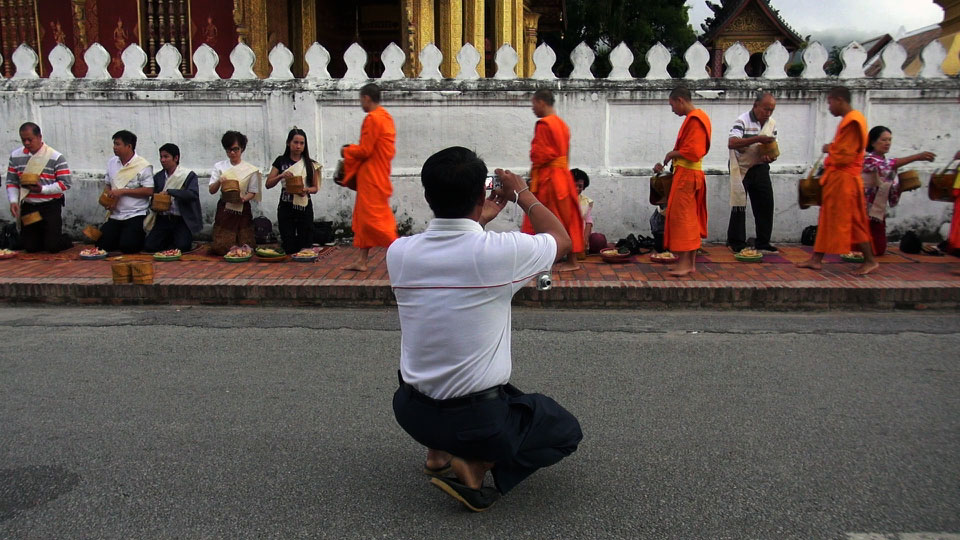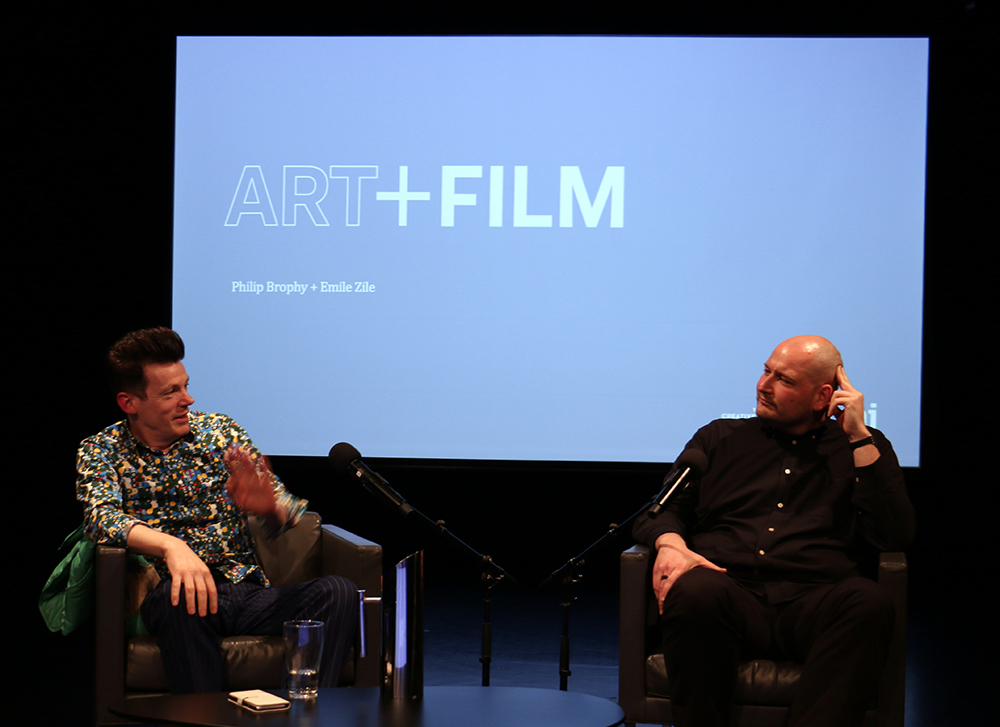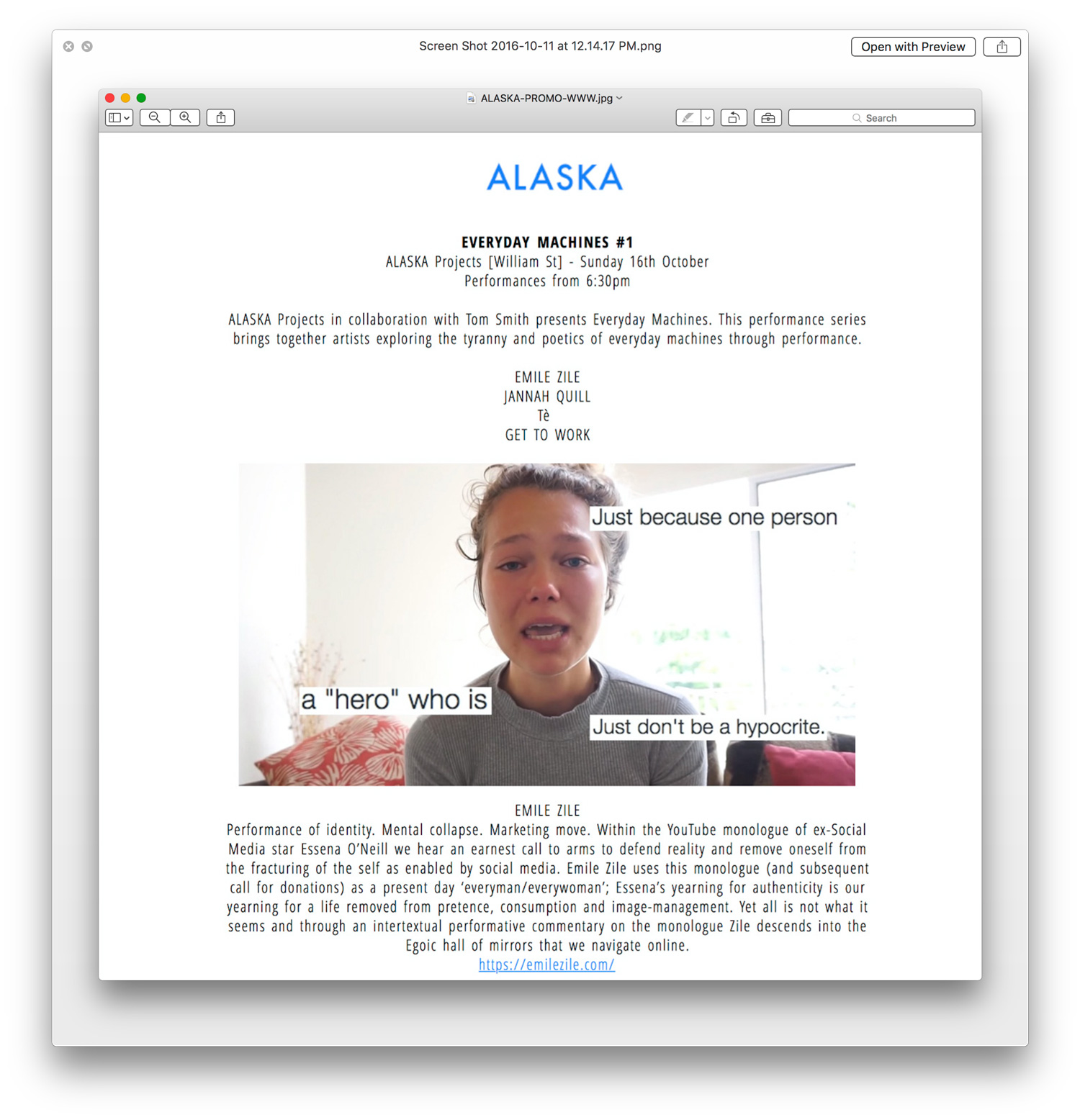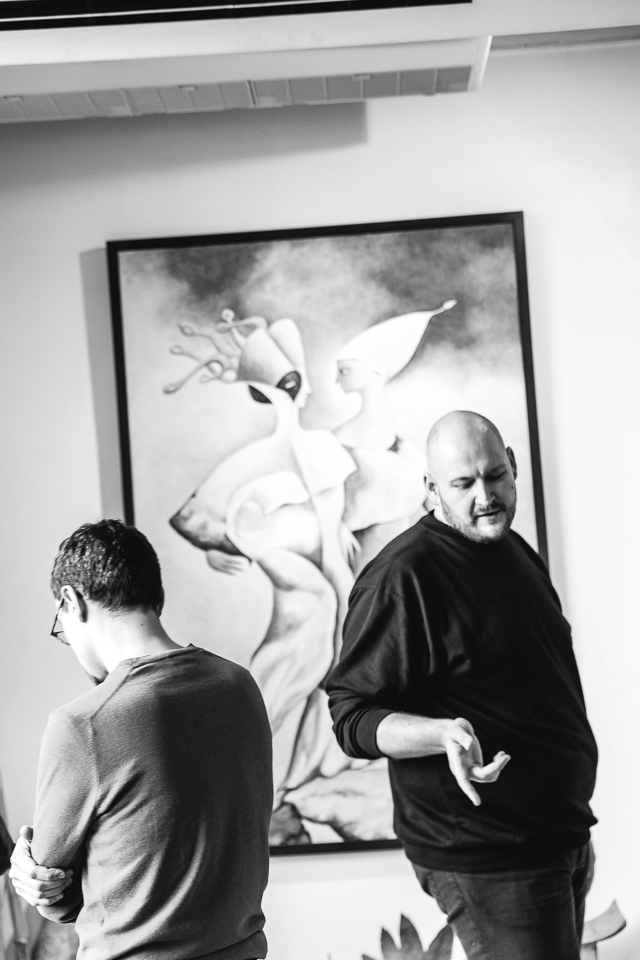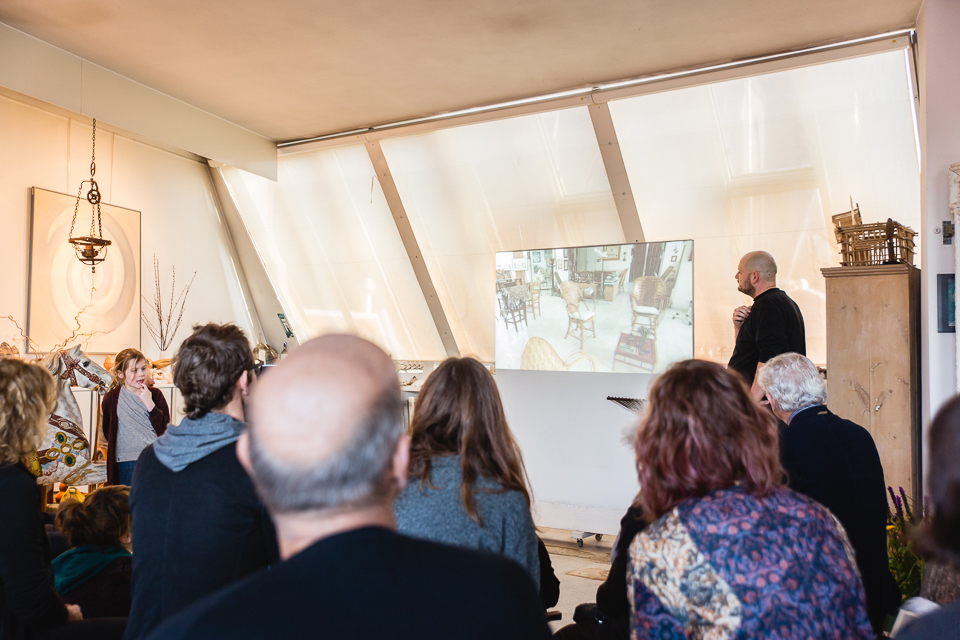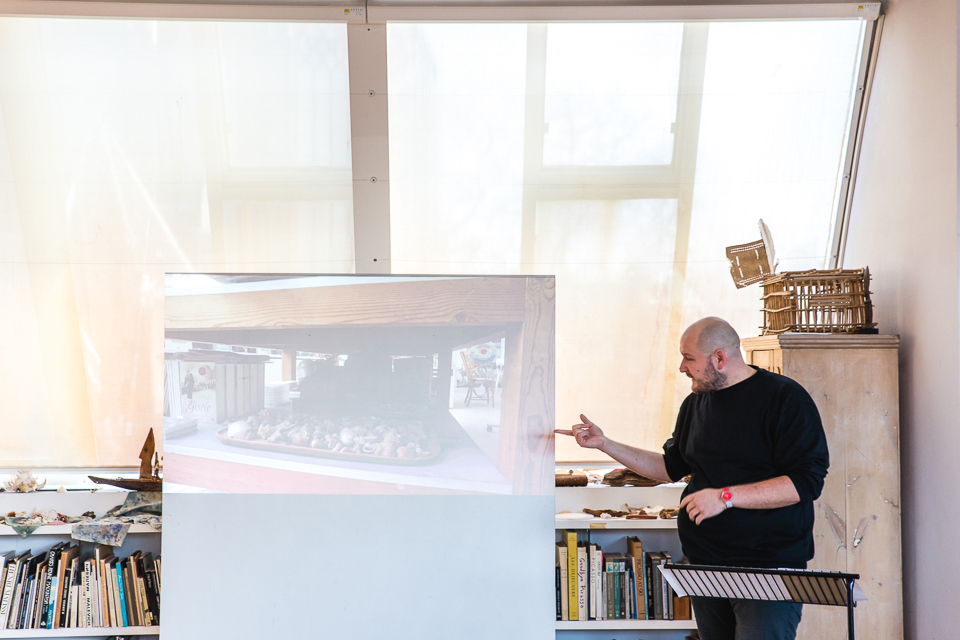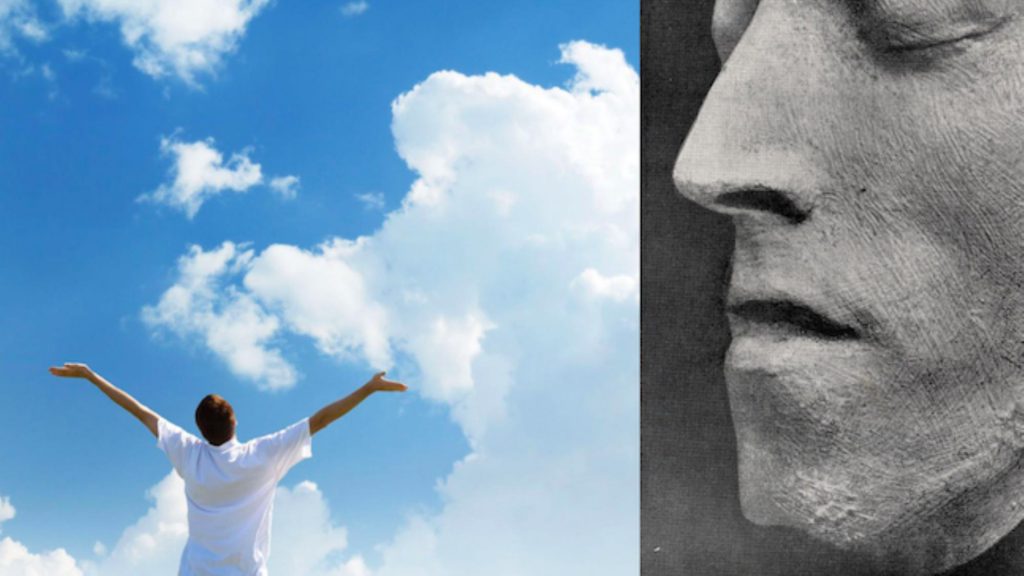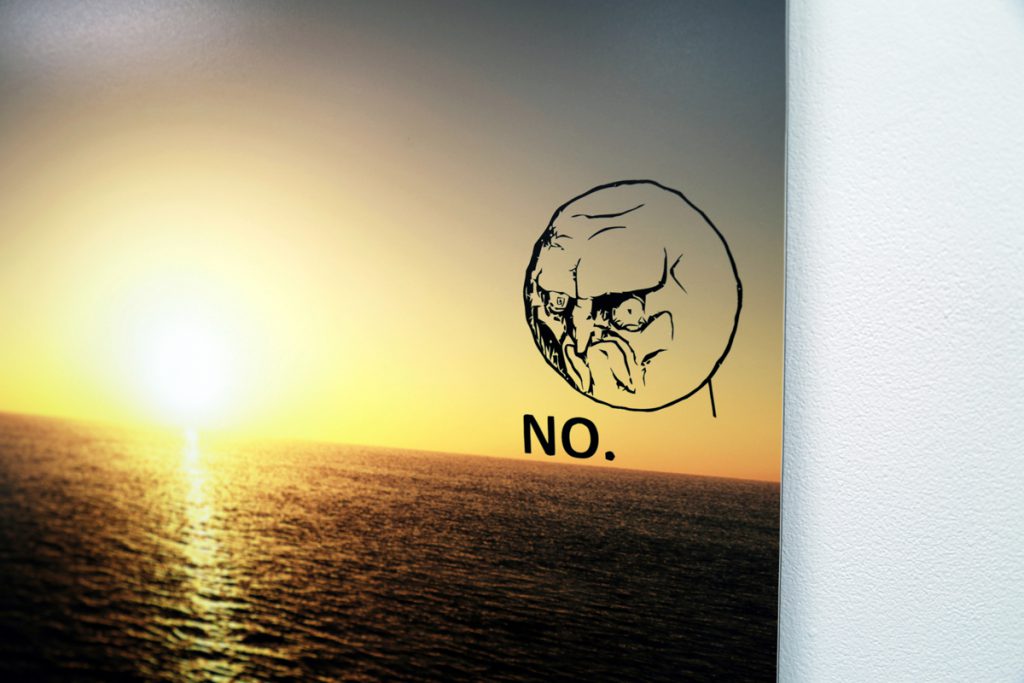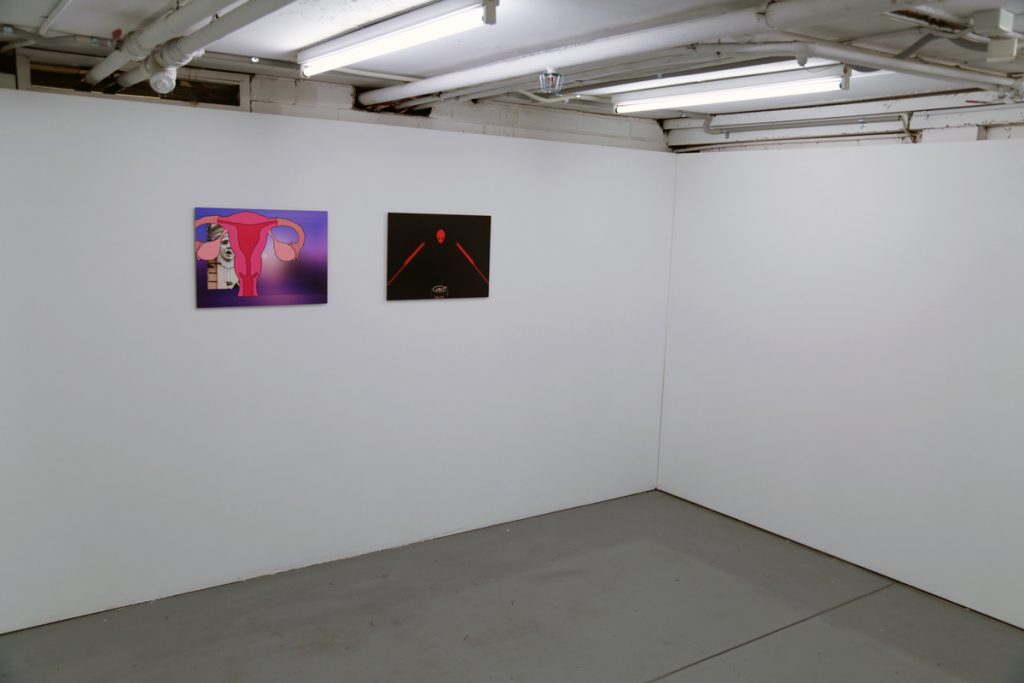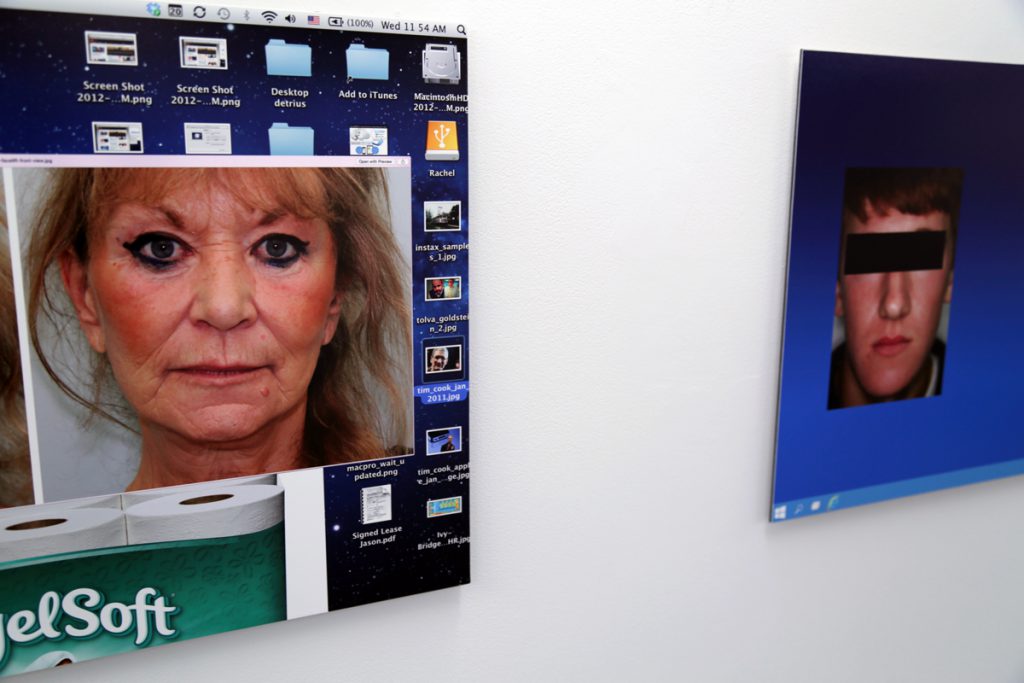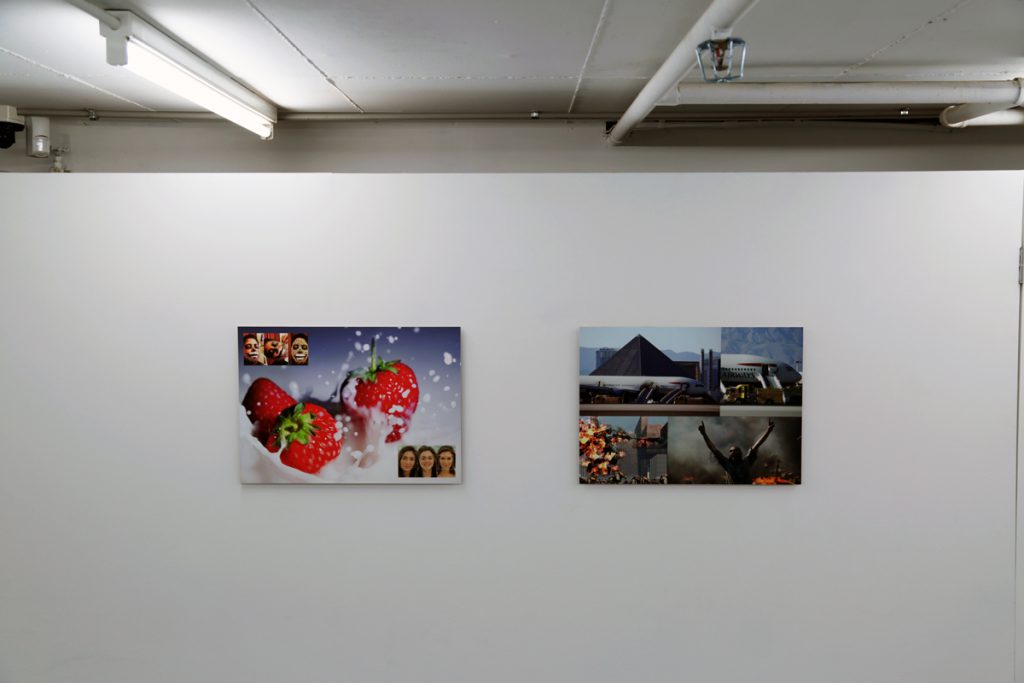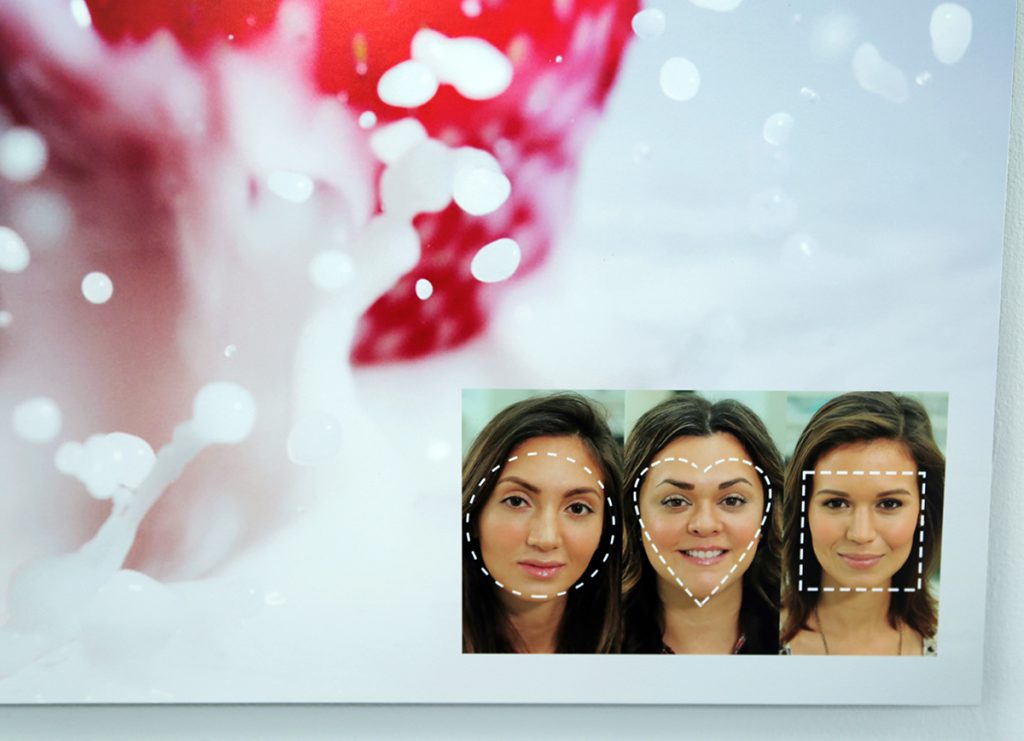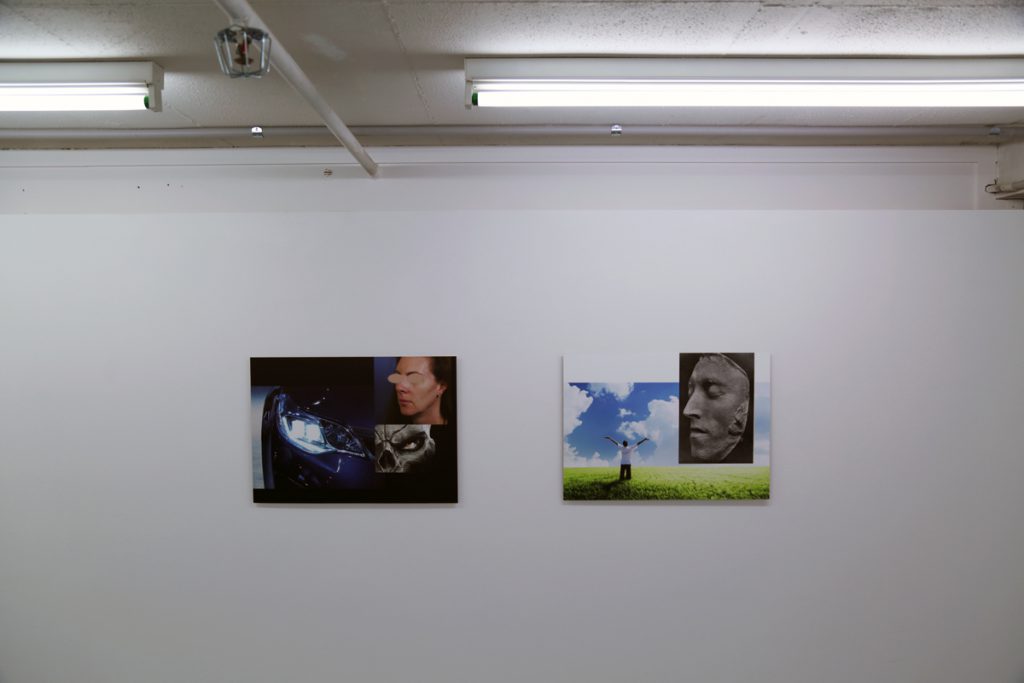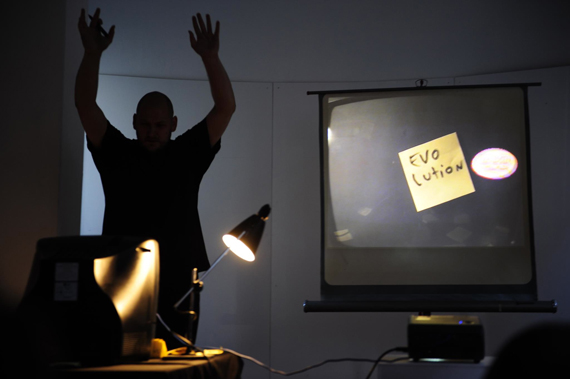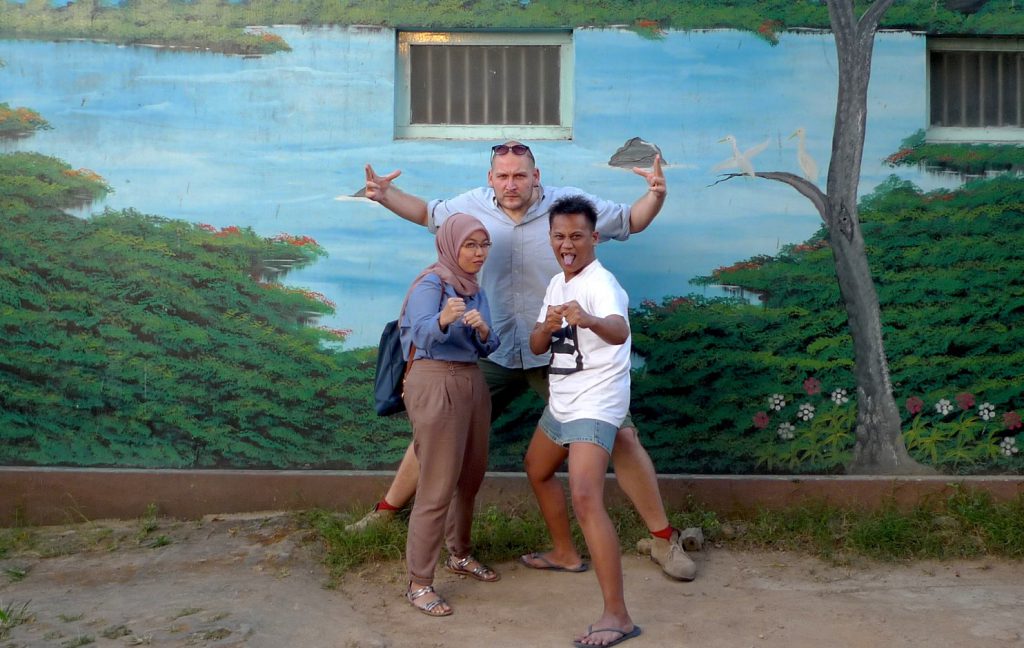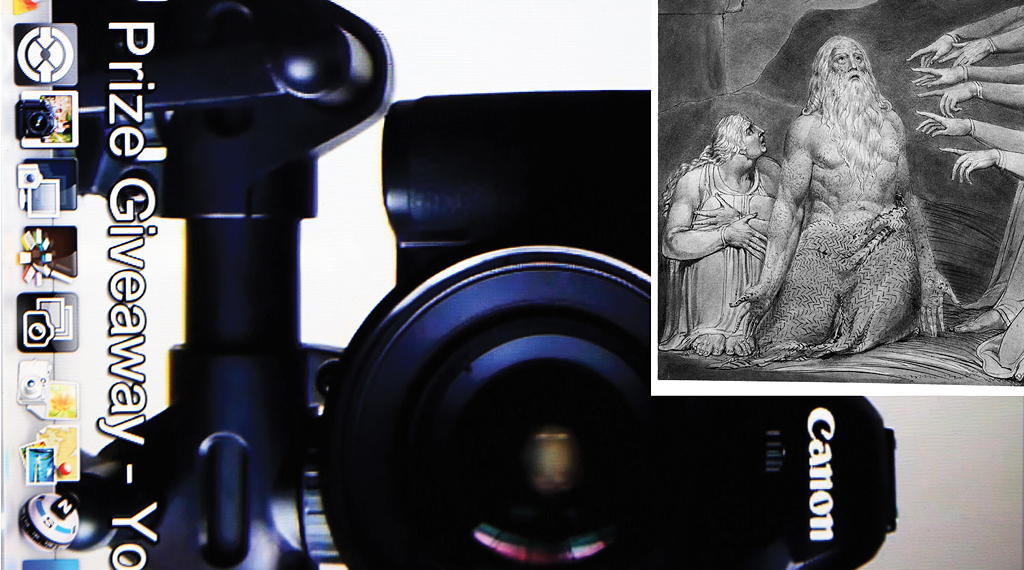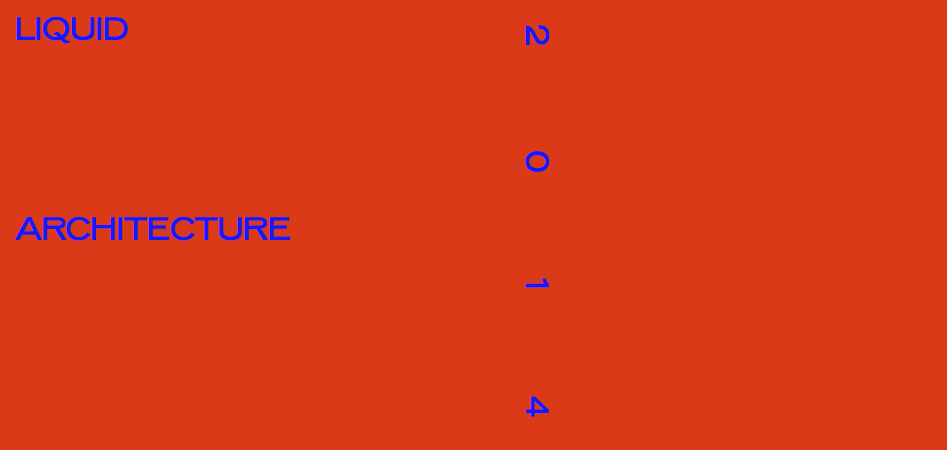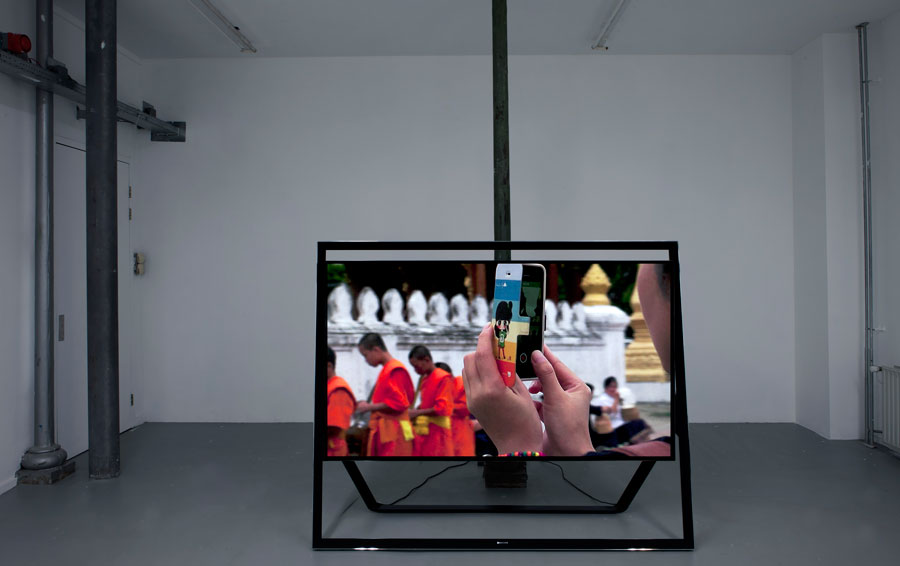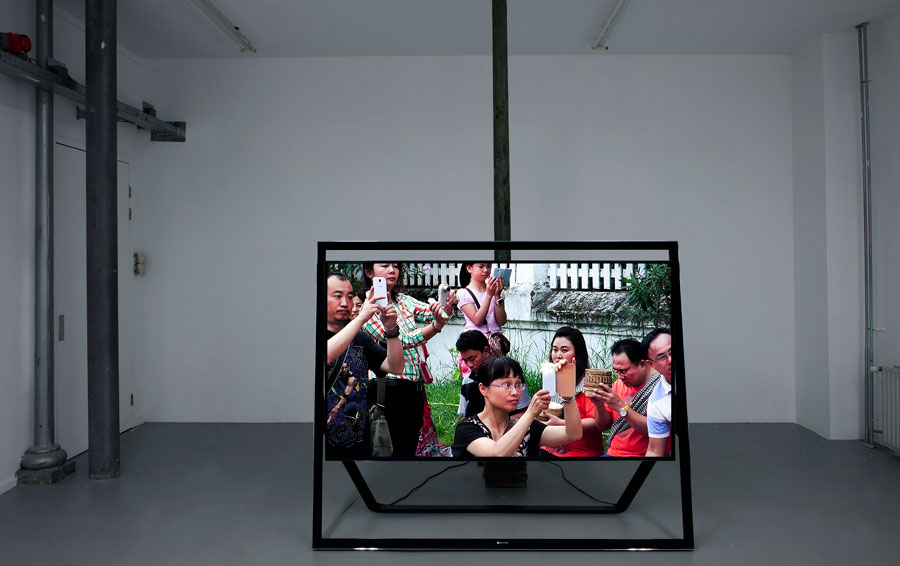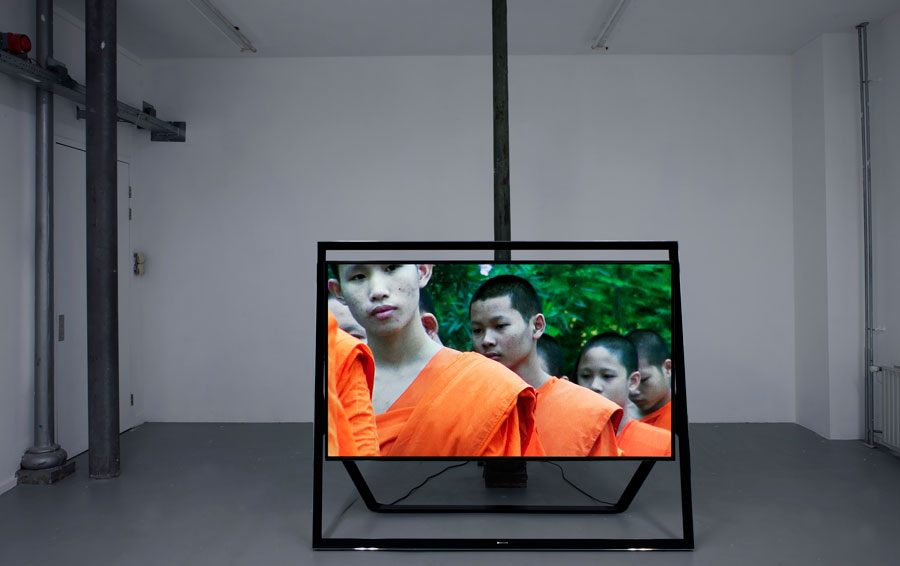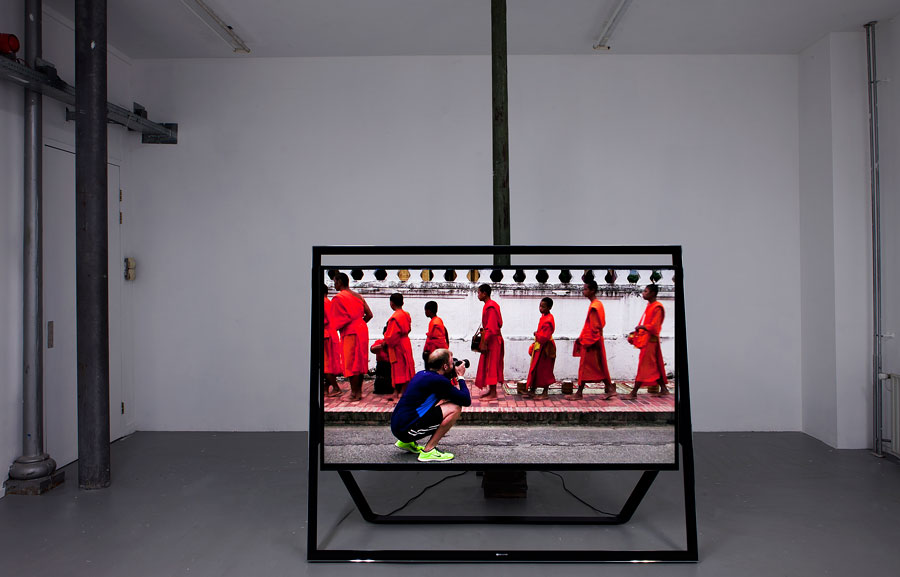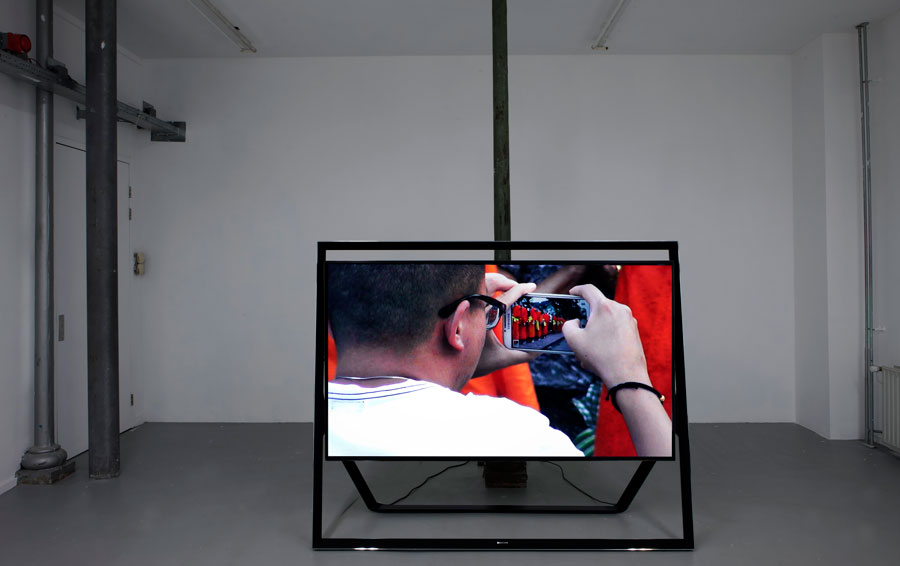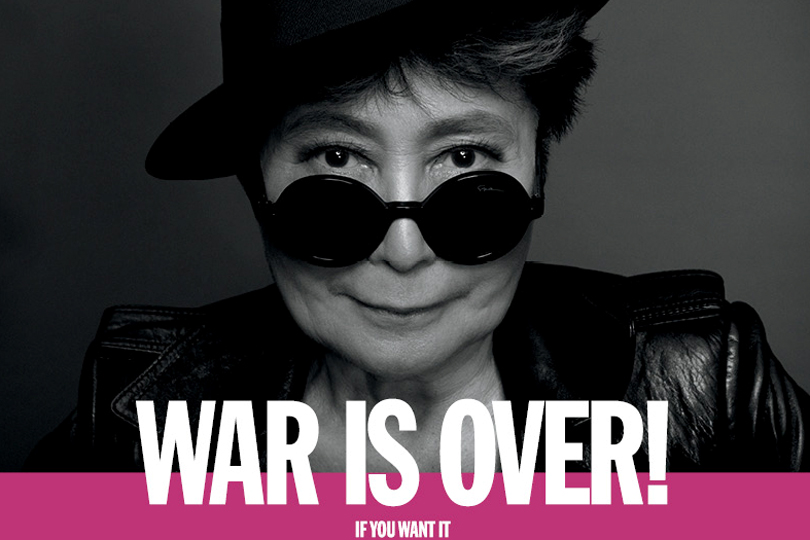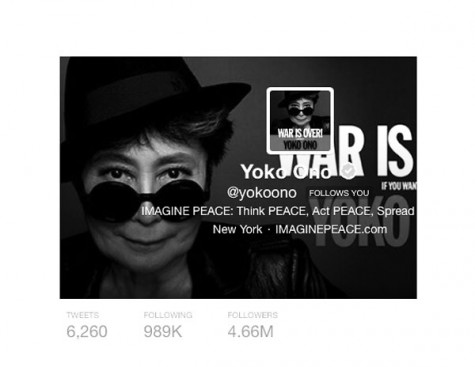FREE LUNCH
Free lunch, final wisdom, total coverage
– Hunter S. Thompson
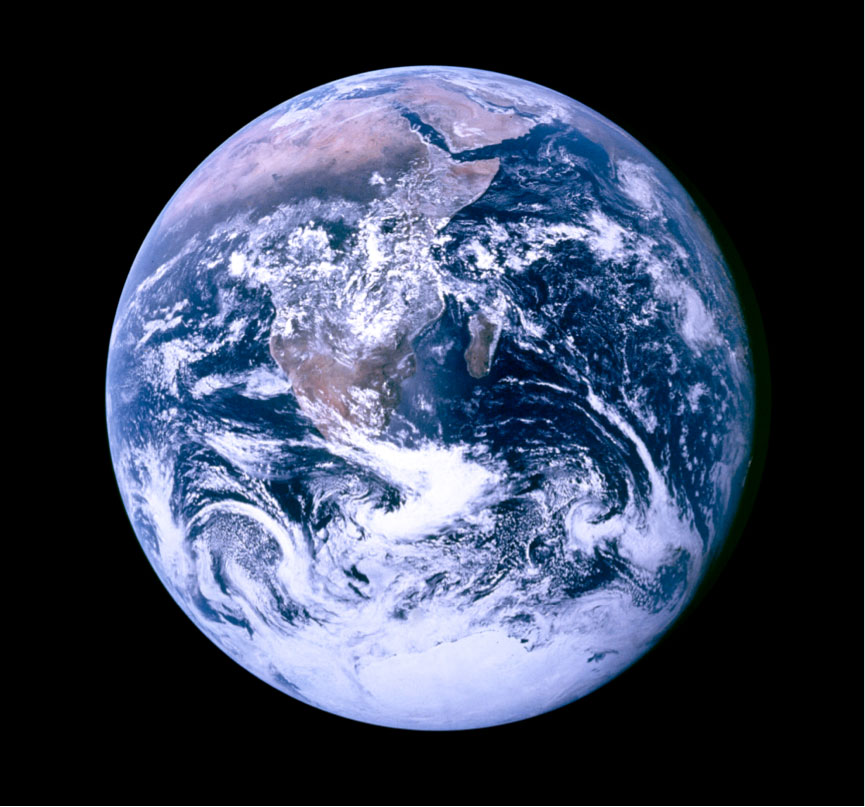
The ‘Blue Marble’ image released from NASA’s Apollo 17 mission. The image was released after solicitation from Stewart Brand, founder of the Whole Earth Catalogue as well as The WELL, the first open digital community.
We live in an ecological period of history, our assumed model and image of the world is that of an ecosphere. Within this sphere everything matters, everything has the potential to be part of everything else. Each instance is imbued with the potential to affect, in a causal chain, everything else. There is no outside .
This could be described as the hell of the butterfly effect, a kind of contingency-overload. How is it possible to separate out the specific from the general within this milieu? What is a significant as opposed to an insignificant event? The question becomes epistemological; how do we know?
Emile Zile’s new video work Western Digital is set on and around the central thoroughfare of a northern Laotian city, Luan Prabang. A city on the confluence of Mekong and Nam Khan rivers, Luan Prabang was the royal seat of Laos until Pathet Lao communist took control in 1975.
Each morning a ritual known as Tak Bak takes place. Tak Bak is a giving of alms to the cities Theravada Buddhist monks. As is shown in Zile’s video, this event takes the form of a procession where monks receive alms in silence, without returning thanks to the giver. There is no giver and receiver in Tak Bak, only giving and receiving. Through Tak Bak the material and spiritual sustain each other without direct encounter; what is beneficial to the monks is meritorious for those giving. Tak Bak is not charitable in the Christian sense.
As Zile’s video shows, the daily procession is two simultaneous events, alms being given and the witnessing of the alms being given. Each morning TAK BAK has nearly as many witnesses, in the form of tourists, as participants.
The images we see being produced in Zile’s work, like the offerings made to the monks it features, have a double life. They’re are on the one hand a document of a specific time and place, and on the other user generated content being uploaded and distributed across a digital network. This freely produced ‘content’ is the one of the key aspects of the ‘third industrial revolution’ that is reshaping various economic, social and political relations; creating new forms of power relations and placing control in the hands of newly emerging organisations. This new economy is part of an experiential ambiance brought about by the advent of a widely deployed digital infrastructure. This is a new economy of free information, not of goods and services, a milieu of TED talks, not public libraries and of freelancing and internships, not jobs. This new milieu of free and ‘open’ information, content and entertainment is what Franco ‘bifo’ Berardi calls the ‘new techno-social framework of contemporary subjectivation”.
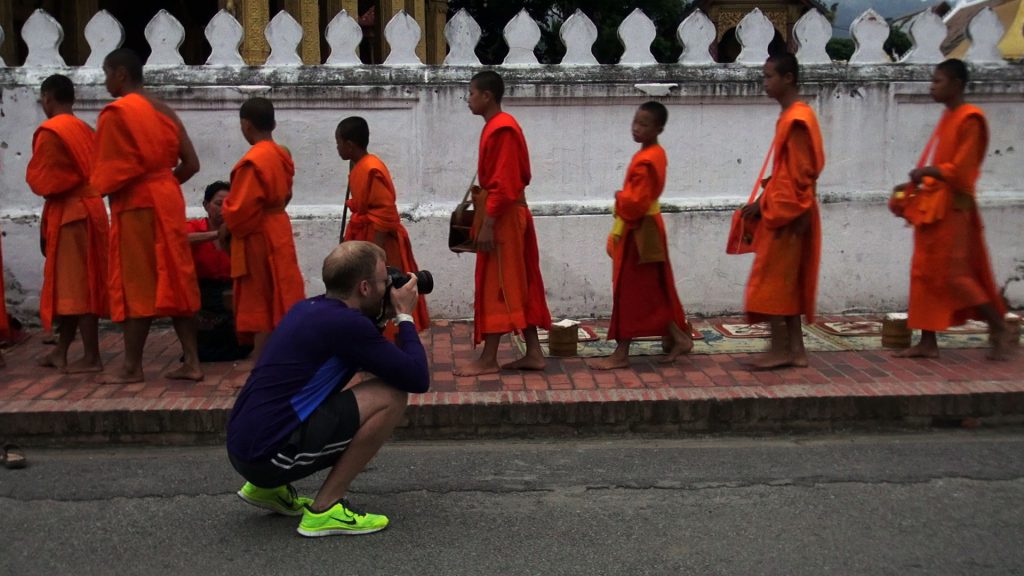
To the organisations and companies leading the capitalisation of this new techno-social framework the resource it produces, in the form of digital ‘content’, is an almost alchemical, infinite, resource. A ‘virgin’ resource, like the new world once was to Europe’s colonial powers. As Alan Greenspan, then Chairman of the US Federal Reserve, explained to Bill Clinton during his first term as president, the effects of the digital economy was like ‘finding a new planet’.
This new resource is the product of the labour executed by the same ‘class’ of consumer of it as a product, in a mediated feedback loop. The product in question, personal expressions has existed in various forms for decades, (home videos, diaries) however, it is only since the advent of web 2.0 that it has become a widely produced and consumed resource. Every Tweet, every Instagram of ‘info-commodity’ is what Berardi calls ‘Semio-capital’, an expression of the interaction between language and labour. Semio-capital is the production of cultural material that puts ‘neuro-psychic energies’ to work as labour. Expressing subjectivity, like the old times of keeping a diary, is now a form of work, of productive labour; the ‘self’ having attained the currency of a resource. Twitter, Facebook et al are in a constant battle for our self-expression.
However, this labour is not paid for in the conventional sense, what you receive in return for producing content for, say Twitter, is free access to the service as a consumer. For the consumer it is an entirely money free transaction, an economy of giving and receiving; not working and paying.
The companies that trade on the production of semio-capital are driving a new economy that could ultimately rewrite the entire concept of exchange value, labour and employment. In turn this new economy (which within the digital is already well established) could therefore go on to fundamentally determine the process of subjectivation of the individual as part of a 21st century economy.
In Zile’s film we see ‘content’ and ‘experience’ in mutual production as a site of subjective personal experience; experience being the critical site of content production. Furthermore we see the two bound together as an expression of an emerging social and economic reality where the site of production and consumption become blurred to the point of indiscernible difference. This indiscernible difference between labour and leisure, between work and life is an outcome of a specific period of social and technical developments that was influenced by the Buddist practices that feature in Zile’s film.
The ‘Californian Ideology’ is a catchall term for the mixture of post war systems theory, popular interpretations of Buddhism and an Ayn Rand style radical individualism that has driven much of the development of both the infrastructure, culture and business models that dominate the digital network today. The idea of a stable, free environment is at the very core of our networked paradigm.
An example of Buddhist inspiration can be found in one of the pivotal figures in both the counter culture of the 1960’s and the World Wide Web. Stewart Brand was the founder of Whole Earth Catalogue as well as the WELL, the first online community. Brand asserted during his counter culture days that the Tao Te Ching by Chinese sage Lao Tzu was in fact the ‘first systems theory book’. The systems theory that Brand refers to gave the Hippy generation a model for a lateral society of anti-Cartesian self-determining, self-organising individuals, free from what they perceived as the corrupt and war mongering institutions of politics and the state.

It was in Buddhism, that had already influenced the avant garde of the 50’s, that the counter culture found its mythology. The selfless, egoless, Buddhist, in the eyes of Brand and others, was equivalent to the cybernetic subject – where the Cartesian self that transcends the material world was reinscribed as a node in a total, planetary, system. As Jefferson Airplane assert in their seminal protest album of the period, Volunteers, ‘see how small your are…the human name doesn’t mean shit to a tree’, expressing the idea that ego of the modern subject is meaningless when culture (and the individuals that make it up) are seen inseparable from the material world as one, total, system.
Systems theory found a home on both sides of the establishment. Jay Forrester at MIT, among others, developed a vision of the world as a total unified ecology of natural and industrial systems. Both the researchers into systems theory at MIT, the wider military-industrial complex and the counter culture movement became strongly attached to the idea of sustainability as the ultimate end of a systems theory view of both nature and culture. This sustainable ecological vision of the world proposes to overcome politics by way of the efficiency and strength of its design as a system, a system designed to bring about harmony and stability. It was and is a project with a utopian dimension directed towards an implicit ultimate end, that of a harmonious world.
However, with the widespread failing of the self-sufficiency and back to the land movement its key proponents were looking for ways to reintegrate their ethos into the mainstream. As Stewart Brand has said of this period ‘self sufficiency didn’t work, so now it’s time to collaborate’, and so the first online community, The WELL (Whole Earth ‘Lectronic Link) was born out of the same self-sufficiency ethos where every voice is equal, the dawn of user-generated content had come. It was with four ex-members of the largest back to the land commune, The Farm, that Brand started The WELL.
The cyber-utopian narrative that came out of the California Ideology of an egalitarian society, ecological sustainability and a boundless life world enhanced by the digital network may have entered a new phase after the 2000 dot com crash and the 2001 attack on the twin towers. What was considered a tool of mass emancipation has become, in a surprisingly quick period of time, dominated by very few corporations and has become a tool for mass surveillance. However, the idea of giving persists as a new economic model, the idea of free information of digital ‘commons’ is a major part of the global network. Producers-consumers give their ‘neuro-psychic’ labours to companies and corporations that provide ‘free’ services. Contrary to the wishes opined in counter culture author Richard Brautigan for a cybernetic infrastructure that would make us ‘free of our labours’, the cybernetic ‘meadow’ we have instead has made old practices into new types of labour, performed for free.
Life in a new world without boundaries (paid/free, employed/unemployed) has to establish and active resistance to the network, or find its psyche colonized and commoditised. The strangest, and most pernicious, aspect of this new regime is that both colonisation and commoditisation are voluntary but irresistible. The spirit of voluntary labour, a benign act of egoless community merit is warped by the digital network into the entry box at the top of any facebook page, requesting the user to enter ‘what is on your mind?’ As one of the first critiques of peer to peer media, made during its early days of the 1990’s wrote ‘Cyberspace is a black hole; it absorbs energy and personality and represents it as an emotional spectacle.’
And this is where we find the nexus of Zile’s film. Within its constellation of ancient Buddhist ritual and networked image production we see a dialectical image, in the sense of Benjamin, emerge.
The location of Zile’s film appropriately makes up its title; the work is literally set in a spatial and temporal location of northern Laos, a much-marginalised nation and forgotten part of the world. However, as Zile’s film makes us aware, everywhere is significant to the ecological vision of the world; there is no outside of the system. Furthermore, Zile’s work shows us that within this milieu of significance substance based value becomes secondary to the psychic, labour is not just about the execution of products and services but also psychic and emotional output. Like the ceremony in documentation shown, a mediated economy of voluntarily giving is taking place whinin our new digital economy of the mind. For the Buddhists involved in the ceremony, the economic exchange is mediated by a belief system, for the tourist, the exchange is mediated by Facebook or Instagram, who, unlike the consumer, make a traditional monetary profit from the meta data of the users.
Just as Walter Benjamin elucidated the reflective energy of the iron windows and mannequins of Paris arcades to talk about the 19th Century, Zile uses the Tak Bak ceremony in Luang Prabang to make recognisable the boundaries and practices that inhabit our ecological, 21st century, milieu. Further to this, Zile’s film shows how the two conceptual schemes of the ‘self’ found in Buddhism and free market capitalism have synthesised into the digital economy, the new planet on which we now must live.
– Matthew Shannon
